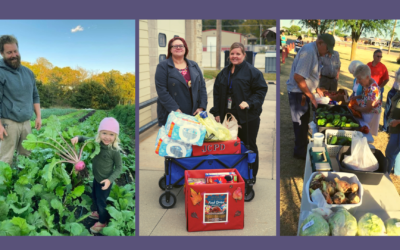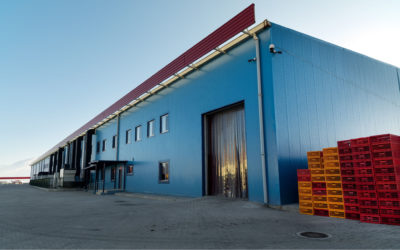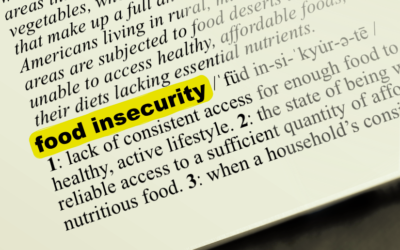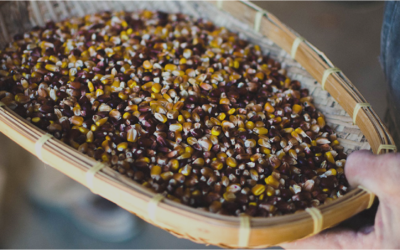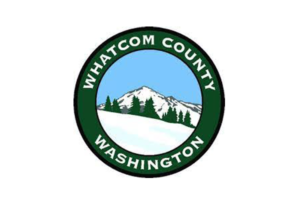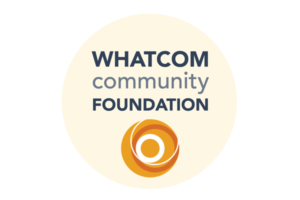
Food Systems are Evolving and We Are Too
The story of New Venture Advisors' inception in 2010 coincides with a pivotal moment in the United States' local food movement. At that time, awareness was gradually dawning on the connections between hunger, health issues like obesity, and the availability of...
Case Study: RG Foods Cooperative Food Hub
A collaboration between RG Foods, Food on the Move, FreshRx, the Tulsa Farmers’ Market, and Oasis Fresh Market identified that supply chain challenges present significant obstacles for small grocery stores and food outlets in and around Tulsa County, Oklahoma. These...
A Guide to USDA LAMP Grants for Food System Projects
Local Agriculture Market Programs (LAMP) are transformative grants in the good food sector. They provide an influx of money for large-scale projects that support the development, coordination, and expansion of direct producer-to-consumer marketing, local and regional...
Feasibility Studies Made Easy: Navigating Your Role in a Food Business Feasibility Study
In a previous blog post, we reviewed the purpose and power of a food business feasibility study. In this follow-up, we will explore what to expect once you embark on the journey– the important role you play, building expectations for a reasonable timeline, how to...
Case Study: Southeast Nebraska Development District
Southeast Nebraska Development District (SENDD) represents nearly 150 jurisdictions ranging in population size from 30 to 10,000 residents across 16 counties. Recognizing that many rural communities have limited economic development support, SENDD set out to create a...
Before Building: 3 Ideas for Boosting Regional Meat Processing Capacity
The global processed meat market is valued at $3.3 trillion, with global meat consumption projected to grow by 14% from 2020 to 2030 (FAO). Most meat, including beef, pork, ruminants, and poultry, is produced and processed at scale by larger commercial farms or...
Feasibility Studies: Their Purpose and Power in Food System Developments
A feasibility study is an analytical tool used during the development of a new project to evaluate how it would operate under a set of assumptions. It explores an idea's viability and helps determine whether to invest further time and money. A feasibility study is not...
Case Study: Manchester, New Hampshire’s Healthy Food Access Plan
Manchester is the most populous city in New Hampshire and northern New England (which includes Maine, New Hampshire, and Vermont). As of the 2020 census, it had a population of 115,644 people. In 2022, the Manchester Health Department conducted a community health...
Food Systems as Economic Development
The field of economic development utilizes programs, policies, and commercial activities to improve a community's economic well-being and quality of life. The field of food system planning can bring together diverse stakeholders from across the food system who are...
Good Food Glossary: Food System
The “food system” is all the steps to get food from farm to table. It encompasses production, processing, distribution, consumption, and waste management. This system can work collaboratively to enhance social, economic, and environmental sustainability. Ecosystems,...
Case Study: Cedar Rapids Community Gardens in Parks Plan
In 2021, the City of Cedar Rapids Iowa developed a Community Climate Action Plan that envisions a resilient and accessible city where all residents can access high-quality green space, healthy food, clean air and water, and good, green jobs. Expanding healthy food...
Building Programs: The Secret to Successful Food Facility Development
Building programs are one of the most dynamic aspects of introducing a new food-focused facility. Building programs are how a community connects to the mission of a facility and experiences the economic impacts. They define a facility's uses, users, spaces, size,...
Case Study: CLiCK, Inc. Expansion Plan
CLiCK, Inc. (Commercially Licensed Cooperative Kitchen) is a 501c3 non-profit in Windham, Connecticut, with a mission to Grow, Cook, Share. The organization recognizes the historical and institutional injustices of the American food system and aims to grow a...
Good Food Glossary: Food Processing
Food processing uses methods and techniques involving equipment, energy, and tools to transform agricultural products such as grains, meats, vegetables, fruits, and milk into edible, functional, and culturally relevant food products. Processing is essential to...
Innovative Rural Grocery Store Trends
Innovation in rural grocery stores is a story of community building. Small-town grocery stores are the heart of their communities, yet many struggle to compete with dollar stores, a shrinking customer base, maintaining aging buildings, and changing customer demands...
Case Study: A County by County Approach to Food System Planning
As part of the Pathways to a Healthy Kansas Initiative, Blue Cross Blue Shield of Kansas launched an innovative grant for community-driven approaches to addressing the social determinants of health. Grantees were encouraged to identify the tools and strategies that...
What’s Next in Food as Medicine: Community Food & Health Centers
Community Food Centers (CFC) are an exciting development in food system infrastructure and make up an increasing share of our work at New Venture Advisors. Typically this facility or group of facilities is composed of multiple types of food enterprises, each with a...
Cold Storage: A Hot Topic for Regional Food Systems
Cold storage, in any capacity, is vital to creating a more resilient food system. It ensures that as little goes to waste as possible at every step of the value chain. But warehouse and cold storage space are in short supply, and the need is only growing. ...
What DEI Means at New Venture Advisors
As the events surrounding George Floyd’s murder caused a welcomed reckoning, we all heard many companies respond with statements of beliefs regarding diversity, equity, and inclusion, and commitments to advancing DEI in their organizations and work. You didn’t hear...
Good Food Glossary: Food Insecurity
Food insecurity is defined as a lack of consistent access to enough food for an active, healthy life. It refers to a lack of available financial resources for food at the household level. (USDA) Food insecurity is a complex problem. Historically, it was thought to be...
Case Study: Adoption of the City of Wichita/Sedgwick County Food System Master Plan
Sedgwick County Kansas (population 523,824) is located in south-central Kansas. Its county seat is Wichita, the most populous city in the state. The Health & Wellness Coalition of Wichita has long championed food system progress in the region, serving as a...
Case Study: Shagbark Seed & Mill
Shagbark Seed & Mill tackles the burgeoning local foods movement head-on within the Ohio ecosystem. Since their launch in 2010 by the Appalachian Staple Food Collaborative, Shagbark has focused on marketing single-source, Ohio-grown, certified organic heirloom...
The LFPA: Optimism for More Equitable Food Systems
With food shortages exacerbated by the pandemic, the Biden administration has announced a flurry of initiatives and funding opportunities to increase resiliency in food supply chains. Tucked into these announcements is the Local Food Purchase Assistance Cooperative...
The Complete Glossary of Terms for Commercial Kitchens
The term Commercial Kitchen can have many variations, yet at its most basic its meaning is a room or building, or any part thereof, used for food preparation that meets all the requirements of local building code and is not a residential kitchen. As commercial...
















